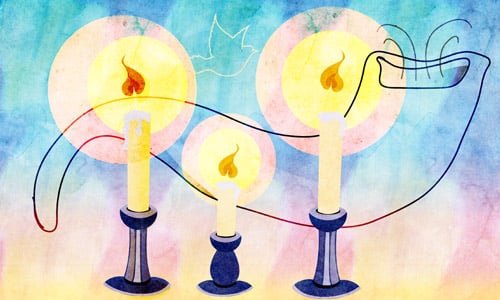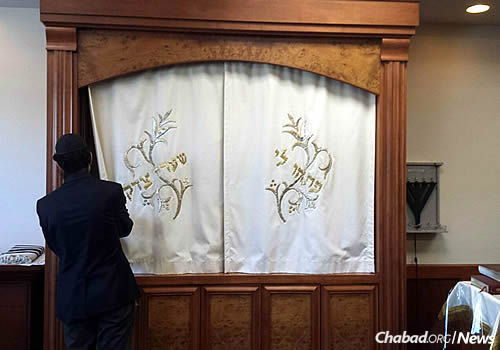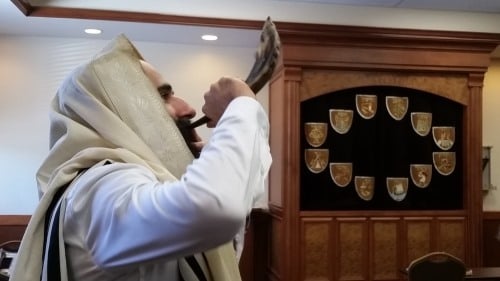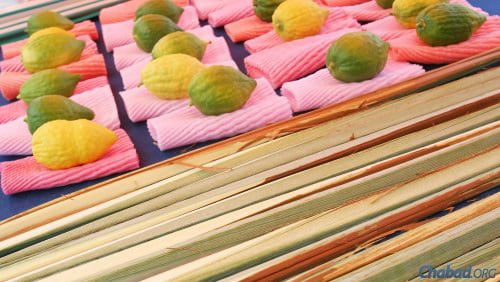 How to Observe Yom Kippur
How to Observe Yom Kippur
Chabad.org

Yom Kippur In Brief
Yom Kippur is the holiest day of the year, when we are closest to G‑d and to the essence of our souls. Yom Kippur means “Day of Atonement,” as the verse states, “For on this day He will forgive you, to purify you, that you be cleansed from all your sins before G‑d.”1
It is held on the 10th day of Tishrei, coming on the heels of Rosh Hashanah (the Jewish New Year, which is on the first and second days of Tishrei).
For nearly 26 hours (in 2017, from several minutes before sunset on Sept 29 until after nightfall on September 30) we “afflict our souls” by avoiding the following five actions:
- Eating or drinking (in case of need, see here and consult a medical professional and a rabbi)
- Wearing leather shoes
- Applying lotions or creams
- Washing or bathing
- Engaging in conjugal relations
Like Shabbat, no work is to be done, and special holiday candles are lit before the onset of the holy day.
 Opening the synagogue ark.
Opening the synagogue ark.
The day is spent in the synagogue, where we hold five prayer services:
- Maariv, with its solemn Kol Nidrei service, on the eve of Yom Kippur;
- Shacharit, the morning prayer, which includes a reading from Leviticus followed by the Yizkor memorial service;
- Musaf, which includes a detailed account of the Yom Kippur Temple service;
- Minchah, which includes the reading of the Book of Jonah;
- Neilah, the “closing of the gates” service at sunset, followed by the shofar blast marking the end of the fast.
Beyond specific actions, Yom Kippur is dedicated to introspection, prayer and asking G‑d for forgiveness. Even during the breaks between services, it is appropriate to recite Psalms at every available moment.
What to Do Before Yom Kippur
 Photo: Chaya Mishulovin, Lubavitch Chabad of Skokie
Photo: Chaya Mishulovin, Lubavitch Chabad of Skokie
Forty days before Yom Kippur, on the first of Elul, we begin blowing the shofar every morning and reciting Psalm 27 after the morning and afternoon prayers. In Sepharadic communities, it is customary to begin saying Selichot early every morning (Ashkenazim begin just a few days before Rosh Hashanah)—building an atmosphere of reverence, repentance and awe leading up to Yom Kippur.
For the week before Yom Kippur (known as the 10 Days of Repentance), special additions are made to prayers, and people are particularly careful with their mitzvah observance.
We are all human, and we occasionally slip. Is there anyone you may have offended or otherwise hurt? Go ahead and ask for their forgiveness. Are you carrying any grudges? Now is the time to sincerely and wholeheartedly let them go.
Just as Yom Kippur is a day of fasting, the day before Yom Kippur is set aside for eating and preparing for this holy day. Here are some of the activities that we do on the day before Yom Kippur:
- Kaparot is often performed in the wee hours of this morning
- There is a beautiful custom to request and receive a piece of honey cake, so that if, G‑d forbid, it was decreed that we need be recipients, it be fulfilled by requesting honey cake and being blessed with a sweet year
- We eat two festive meals, one in early afternoon and another right before the commencement of the fast.
- Many have the custom to immerse in a mikvah on this day.
- Extra charity is given. In fact, special charity trays are set up at the synagogue before the afternoon service, which contains the Yom Kippur Al Cheit prayer.
- Just before the fast begins (after the second meal has been concluded), it is customary to bless the children with the Priestly Blessing.
- Holiday candles are lit before the onset of the holy day. Read more about the various candles traditionally lit before Yom Kippur.
What We Do After Yom Kippur

After night has fallen, the closing Neilah service ends with the resounding cries of the Shema prayer: “Hear O Israel: G‑d is our L‑rd, G‑d is one.” Then the congregants erupt in joyous song and dance (a Chabad custom is to sing the lively “Napoleon’s March”), after which a single blast is blown on the shofar, followed by the proclamation, “Next year in Jerusalem.”
We then partake of a festive after-fast meal, making the evening after Yom Kippur a yom tov (festival) in its own right.
Indeed, although Yom Kippur is the most solemn day of the year, it is suffused with an undercurrent of joy; it is the joy of being immersed in the spirituality of the day and expresses confidence that G‑d will accept our repentance, forgive our sins, and seal our verdict for a year of life, health and happiness.
There is a custom that after Yom Kippur, we immediately begin (planning) construction of the sukkah, which we will use for the joyous holiday of Sukkot, which follows in just five days
Zawartość publikowanych artykułów i materiałów nie reprezentuje poglądów ani opinii Reunion’68,
ani też webmastera Blogu Reunion’68, chyba ze jest to wyraźnie zaznaczone.
Twoje uwagi, linki, własne artykuły lub wiadomości prześlij na adres:
webmaster@reunion68.com
